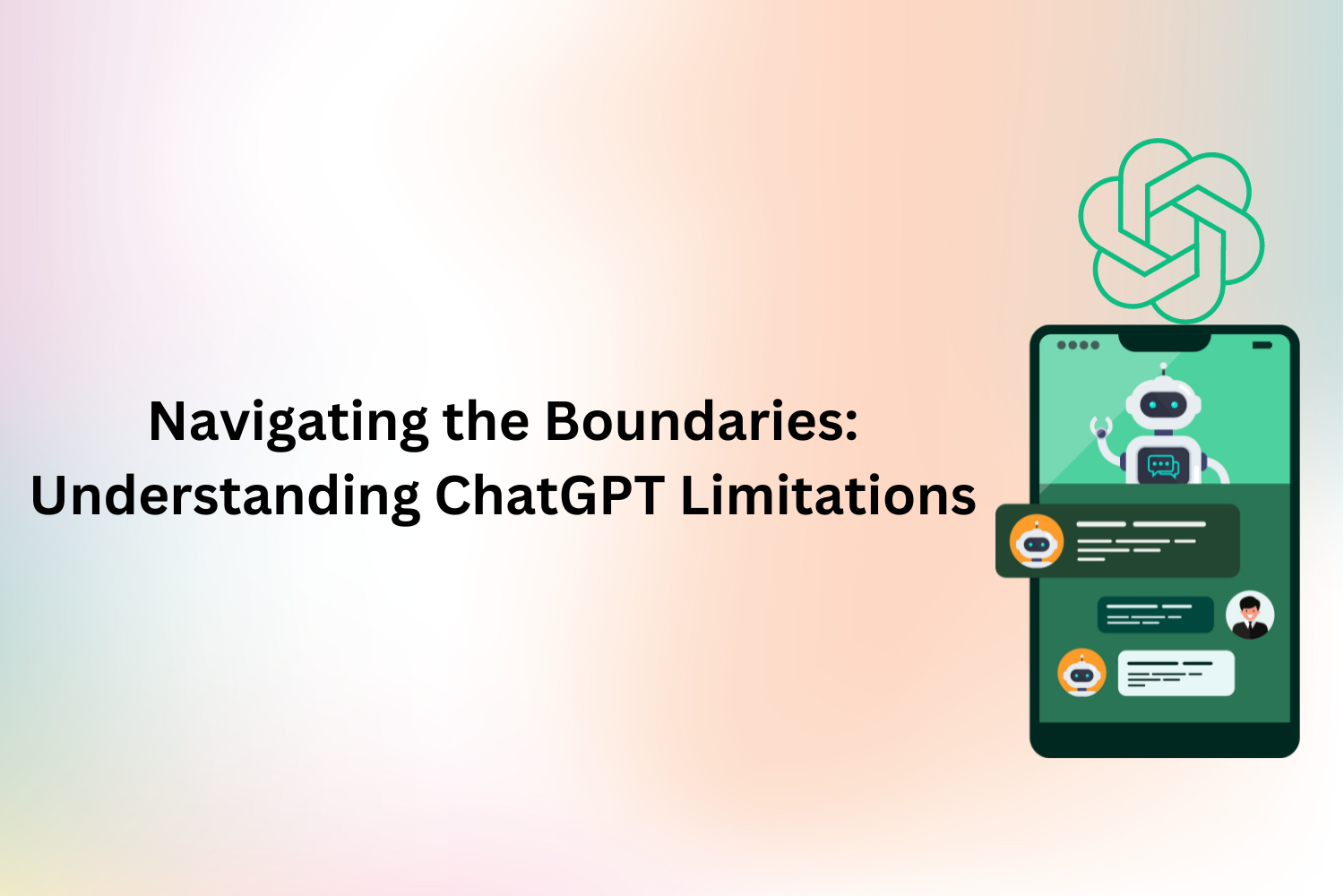
In the expansive realm of artificial intelligence, ChatGPT has emerged as a revolutionary language model, capable of generating coherent and contextually relevant text based on user inputs. Developed by OpenAI, this powerful tool has found applications in various domains, from content generation to conversational agents. However, like any technology, ChatGPT comes with its set of limitations. In this blog, we'll discuss not only the limitations but also shed light on How to Use ChatGPT effectively, ensuring users can navigate its capabilities with a nuanced understanding. This insight is essential for users to harness the potential of ChatGPT while being mindful of its limitations.
Table Of Contents
- Contextual Understanding: The Challenge of Long-Term Context
- Sensitivity to Input Phrasing: The Impact of Formulation
- Lack of Real-Time Information: Static Knowledge Base
- Proneness to Misinformation: Reflecting Training Data Biases
- Ambiguity Handling: Struggles with Multifaceted Queries
- Mitigating Limitations: Best Practices for Users
- Conclusion
Contextual Understanding: The Challenge of Long-Term Context
One notable limitation of ChatGPT is its struggle with maintaining a coherent understanding of context over extended interactions. While it excels at short-term context, engaging in lengthy conversations may result in a loss of coherence and relevance. Users might experience the model providing responses that seem unrelated or contradictory as it struggles to retain a comprehensive grasp of ongoing dialogue.
Sensitivity to Input Phrasing: The Impact of Formulation
ChatGPT is highly sensitive to the way a question or prompt is phrased. A slight rephrase can lead to different responses, showcasing its susceptibility to variations in input structure. This limitation requires users to be mindful of how they frame their queries to elicit the desired information or response, as subtle changes can yield divergent outcomes.
Lack of Real-Time Information: Static Knowledge Base
While ChatGPT possesses a wealth of information up to its last training cut-off in 2022, it doesn't have real-time awareness or access to current events post that period. Consequently, its responses may not reflect the latest developments, and users should exercise caution when seeking information that may have evolved after the last training data update.
Proneness to Misinformation: Reflecting Training Data Biases
ChatGPT is trained on diverse datasets from the internet, which means it may inadvertently reflect and perpetuate biases present in that data. Users should be aware that responses generated by ChatGPT may unintentionally reinforce existing stereotypes or misconceptions. It is crucial to critically evaluate the information provided and not solely rely on it for accurate, unbiased insights.
Ambiguity Handling: Struggles with Multifaceted Queries
Handling ambiguous queries or requests with multiple interpretations poses a challenge for ChatGPT. In such cases, the model may generate responses that cover different possible angles or provide general information, reflecting its difficulty in pinpointing a specific context when faced with ambiguity.
Mitigating Limitations: Best Practices for Users
While understanding ChatGPT limitations is essential, users can employ certain practices to navigate and mitigate these challenges effectively:
Be Explicit and Specific
When interacting with ChatGPT, aim for clarity and specificity in your queries. Clearly outline your expectations to receive more accurate and relevant responses.
Verify Information Independently
Given the potential for biases and outdated information, it's advisable to independently verify critical information obtained from ChatGPT, especially for real-time or highly dynamic subjects.
Break Down Complex Queries
To enhance understanding, break down complex or multifaceted queries into simpler, more specific questions. This aids ChatGPT in providing more focused and precise responses.
Exercise Caution with Sensitive Topics
When discussing sensitive or controversial subjects, exercise caution and critically assess the responses. Be aware that the model may inadvertently generate content that reflects existing societal biases.
Conclusion
As a groundbreaking language model, ChatGPT has redefined the landscape of natural language processing. However, it's crucial for users to recognize and navigate its limitations judiciously. By understanding the boundaries of ChatGPT and employing best practices, users can harness its capabilities effectively while remaining mindful of potential pitfalls. As technologies evolve, so will ChatGPT, and OpenAI continues to iterate and improve its models, addressing limitations and enhancing performance. In the dynamic field of AI, acknowledging and adapting to these constraints is an integral part of leveraging these powerful tools responsibly.

No comments yet